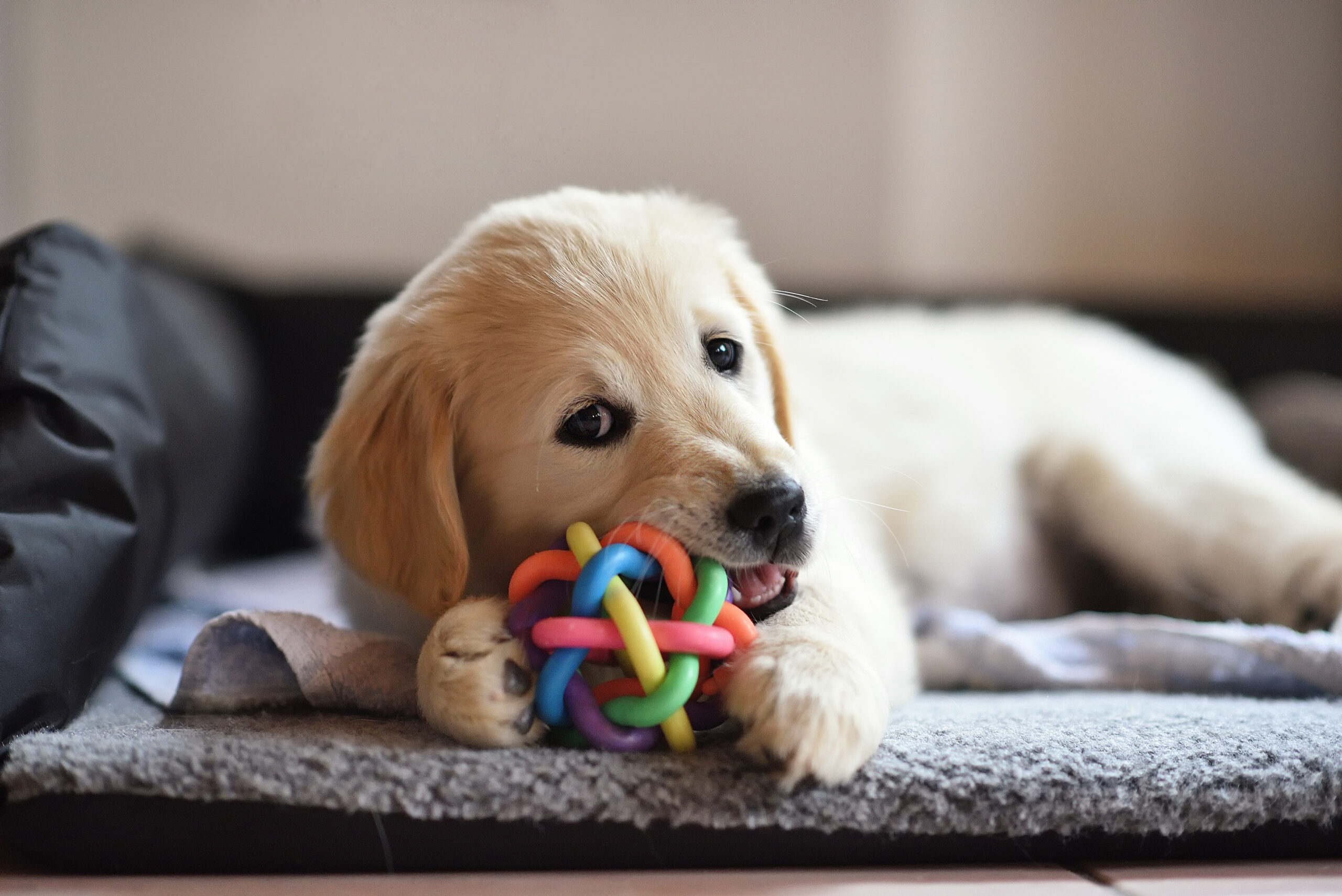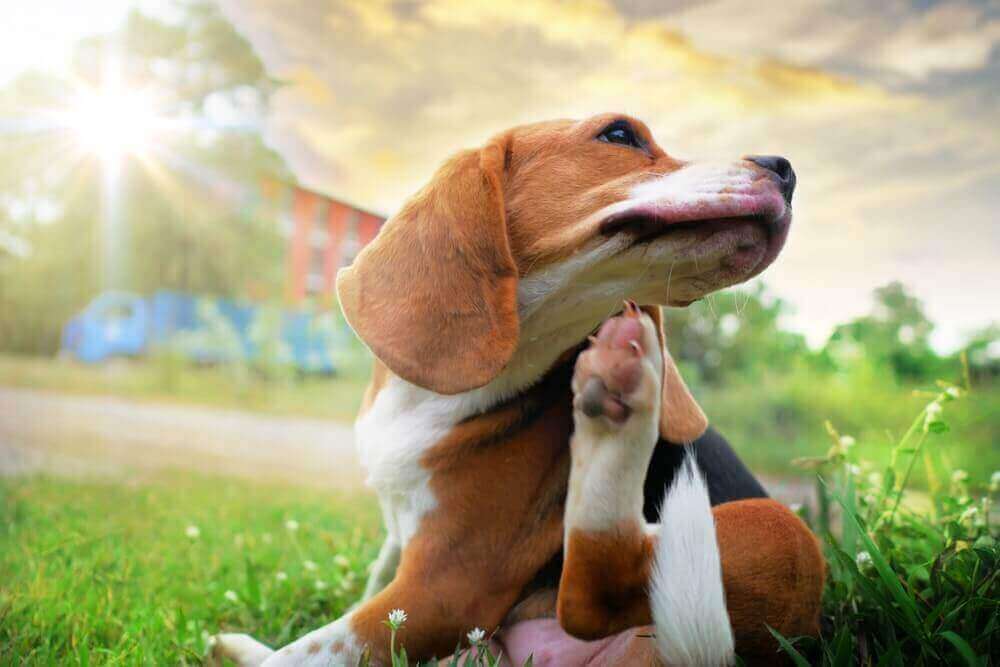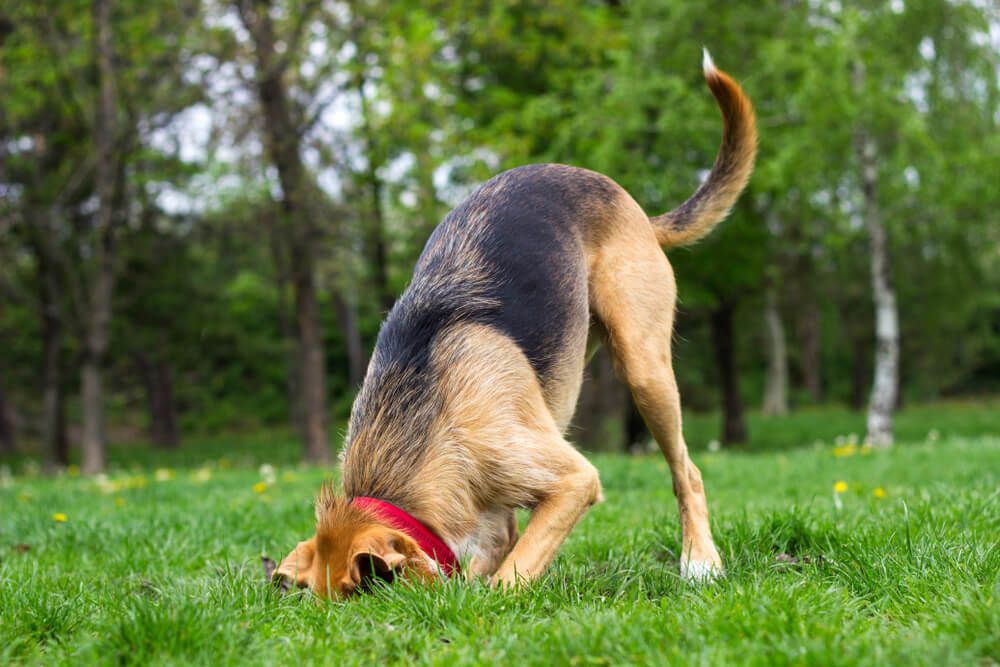Hey Ollie blog readers! We’re offering you an exclusive 60% OFF your starter box! Try now!
Bringing home a new puppy is one of the most exciting—and important—moments in a dog parent’s life. But while it’s easy to get caught up in the cuteness, it’s just as important to be prepared. Having the right supplies, training plan, and care essentials ready can make your puppy’s transition smoother and less stressful—for both of you.
This all-in-one new puppy guide includes a practical puppy checklist, expert-approved tips, and guidance from veterinarians, dog trainers, and behavioral specialists. Whether you’re a first-time dog owner or welcoming your next furry family member, this guide will help you set your pup up for a healthy, happy start.
New Puppy Checklist: What You Need Before Day One
Bringing home a new puppy is exciting—but it’s also a major responsibility. Having everything in place before your puppy steps through the door can help ease their transition and make those first few days smoother for both of you. This essential new puppy checklist includes the basics every pet parent needs to get started—from feeding and safety gear to toys and grooming tools.
1. Basic Supplies
These are the non-negotiables. You’ll use them every single day, starting from day one.
- Collar and ID tag: Choose a lightweight, adjustable collar with a secure ID tag that includes your phone number.
- Leash: A standard 4-6 foot leash gives you control without being overwhelming for a puppy.
- Crate: Choose a size that allows your pup to stand up and turn around but not so large that they can eliminate in one corner and sleep in another.
- Food and water bowls: Go for non-slip, easy-to-clean options like stainless steel or ceramic.
- Poop bags: You’ll need them immediately—trust us. Stock up.
- Enzyme cleaner: Accidents happen. A pet-safe enzymatic cleaner is a must for odor and stain removal.
Pro Tip: Set up your puppy’s crate and bowls in advance to make their first day feel calm and structured.
2. Feeding Essentials
Getting nutrition right from the start supports healthy growth and digestion. Here’s what you’ll need:
- High-quality puppy food: Look for a complete and balanced diet formulated specifically for puppies. Ollie fresh dog food plans are tailored by size, breed, and life stage, making it easy to feed your puppy right.
- Training treats: Opt for soft, high-value treats you can break into small pieces to reward good behavior.
- Food storage: Use an airtight container to keep dry food fresh and safe from curious noses.
- Feeding schedule: Create a simple daily feeding schedule based on your vet’s recommendation or Ollie’s meal plan suggestions.
Puppies need more frequent meals than adult dogs—usually three to four meals per day.
3. Comfort and Enrichment
Your puppy’s mental and emotional well-being starts with comfort and stimulation. Make sure your home has:
- Comfy bed: Choose a washable, supportive bed that fits inside your puppy’s crate or designated sleep space.
- Chew toys: Puppies need to chew. Provide rubber toys or teething rings that are safe and durable.
- Interactive toys: Toys that challenge your puppy’s mind (like treat puzzles or snuffle mats) help burn energy and reduce boredom.
- Blanket or soft item from the breeder/shelter: Familiar scents can ease anxiety in those first few nights.
Enrichment prevents behavior issues before they start. A mentally tired puppy is a well-behaved one.
4. Health and Grooming
A healthy pup is a happy pup. Even if your dog is up to date on vaccines when they come home, you’ll want to be ready for their first vet checkup and regular care routines.
- Vet records: Get all documentation from the breeder, rescue, or shelter and keep it organized.
- Brush: Choose a gentle puppy brush appropriate for your dog’s coat type. Start brushing early to get them used to grooming.
- Puppy shampoo: Use a gentle, tear-free formula made for dogs—no human shampoo, please.
- Nail trimmers: If you’re comfortable trimming nails, start slow with small clippers. Otherwise, ask your vet or groomer.
- Flea and tick prevention: Ask your vet about a safe plan for your puppy’s age and weight.
Schedule your first vet appointment within a week of bringing your puppy home, even if they’re not due for vaccines.
Preparing Your Home For Your New Puppy
Puppies aren’t born with good manners or any concept of good and bad behavior, so it’s up to you to ensure their new home is safe and free from household dangers.
Dog-Proofing Your Home
Dog-proofing protects your curious puppy from harmful items or hazards in the surrounding environment. Common dog-proofing steps include identifying and removing, replacing, or securing potential dangers such as household toxins, harmful plants, choking hazards, electrical cords, and precious or breakable items, and installing barriers to limit your puppy’s access to certain rooms or doorways to prevent unauthorized exploration or escape. Don’t forget to address outdoor spaces where your puppy may be playing, as these can contain additional hazards.
Dog-proofing your home is essential to keep your curious puppy safe from potential hazards.
Key steps include:
- Removing or securing household toxins, harmful plants,choking hazards, and electrical cords.
- Securing valuable or fragile items
- Installing gates to restrict access to certain areas of the home.
- Puppy-proofing your backyard so your puppy has a safe place to play.
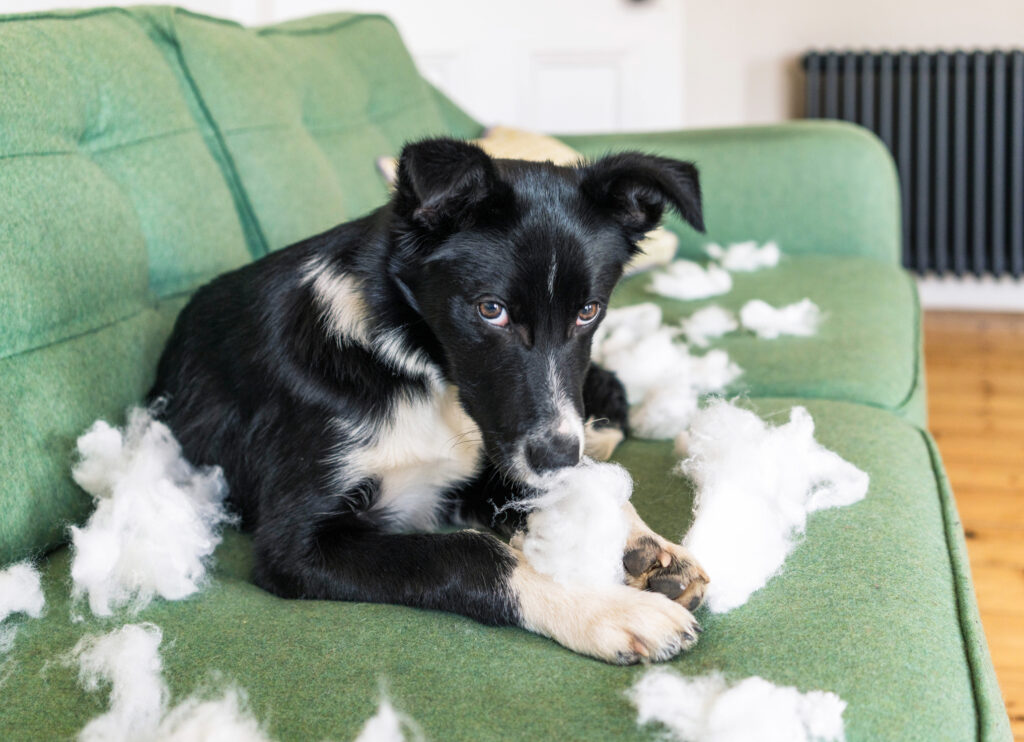
Learn: Guide to Dog Proofing Your Home
Create a Designated Space for Your Puppy
Puppies shouldn’t have free range in your home, as this can make it difficult to supervise their behavior and maintain clear potty training criteria. Instead, set up a secure and welcoming space for your puppy with an exercise pen or gates.
Position this area centrally so your puppy feels included in family activities and can be easily watched. Make sure there’s enough space for your puppy to eat, drink, sleep, and play include their crate to offer a cozy retreat whenever they need some quiet time.
Vet Tips: How to Crate Train Your New Puppy.
Essential Supplies for a New Puppy
Puppies need the right supplies to keep them healthy, safe, comfortable, and preoccupied! Have all your essentials on hand before you bring your puppy home, including:
- Leash and harness for walking and training
- Dog food
- Food and water bowls
- Washable bedding
- Poop bags
- Clean-up supplies, including an enzymatic stain remover (for accidents!)
- Crate with a divider
- Bite-size training treats
- Puppy-safe toys of various shapes and materials
- Brush and nail clipper
- Puppy gates and/or portable exercise pen
- Seatbelt or crate for safe car travel
- Potty pads (optional)
Discover: How to Choose Safe Dog Toys
Your puppy’s list will likely grow with them as you learn more about their unique preferences and needs, so be prepared to do some extra shopping once you get to know your new best friend.
Choosing a Healthy Dog Food
Making the best choices for your puppy’s health and wellness can feel intimidating and overwhelming, especially regarding what you’ll feed them. Understanding your puppy’s unique nutritional needs, and how they can change as your pup grows and matures, can help you make a confident and informed decision.
Dog Food Nutrition
Dogs require specific nutrition tailored to each life stage.
- Puppies need a high-calorie, high-fat diet enriched with essential nutrients for optimal growth.
- Adult dogs generally need fewer calories but sufficient protein to maintain health.
- Senior dogs may need more protein to preserve muscle mass or a high-fiber, low-calorie diet to manage weight.
Additionally, caloric needs vary between small and large breeds. It’s crucial that at every stage, a dog’s diet is complete and balanced to provide the necessary vitamins, minerals, and nutrients.
Types of Dog Food
Dog food is available in a range of formulations to satisfy dog and owner preferences. The most popular types of dog food include:
- Dry food (kibble) — Dry food is the most popular dog food type. Dogs appreciate the crunchy texture while owners value the long shelf life and economical cost.
- Wet food (canned) — Wet food contains a higher moisture content and can be more appetizing for some dogs.
- Semi-moist — Semi-moist foods generally require refrigeration after opening and are typically sold in pouches, plastic containers, or packets. These foods may be more palatable to some dogs, however, they are not cost-effective for large breeds.
- Fresh food — Fresh dog food is gently cooked—not processed—to lock in nutrition from wholesome ingredients such as animal protein, fruits, vegetables, and whole grains. These foods generally don’t contain fillers or preservatives and require refrigeration.
- Freeze-dried and dehydrated food — These dog foods are prepared without high heat or harsh processing to ensure the final product contains maximum nutritional value.
How Much Should I Feed My New Dog?
Your puppy’s meal portion size will depend on several factors including their age, current weight and body condition, and anticipated adult weight. While your veterinarian is the best resource for determining how much to feed your growing puppy, plan to feed several small meals throughout the day to ensure proper development and steady energy.
Ollie makes it easy to feed your dog with confidence. Our customized meal portions ensure you’re always serving up the appropriate balance of flavor and nutrition to support your growing puppy.
Basic Puppy Health and Wellness
Your puppy’s early veterinary care and wellness sets them up for a lifetime of health. Assemble your puppy’s care team (e.g., veterinarian, groomer, trainer) to ensure their physical, mental, and emotional well-being.
Choosing the Right Veterinarian
If you don’t already have a veterinarian you trust, research and interview several different practices before scheduling your puppy’s first visit.
Things to consider include:
- services provided
- special accreditations or recognitions (e.g., Fear Free™ certification, American Animal Hospital Association accreditation),
- convenient hours
- online reviews
- the veterinarian’s demeanor
- client service
Read: How to Find the Right Vet for Your Dog
Puppy Vaccination Schedule
Vaccines train your puppy’s immune system to defend itself against dangerous—often deadly—viruses and diseases such as parvovirus, canine distemper, and rabies. Although your veterinarian will provide detailed guidance, puppy vaccines are generally administered as a series with visits every three to four weeks until the puppy is 16 weeks old.
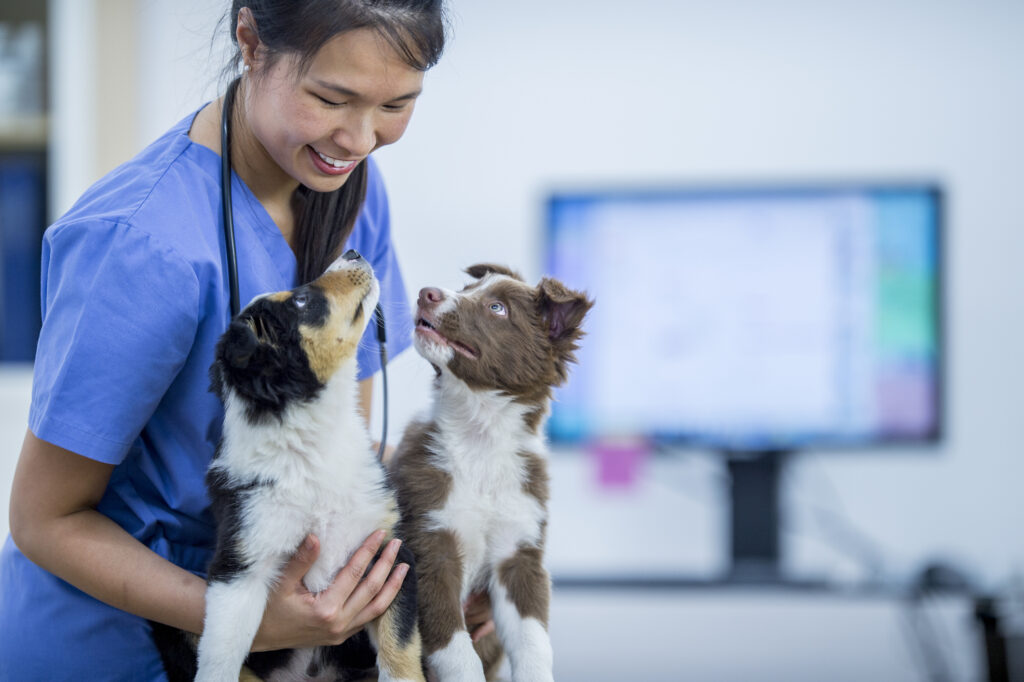
Review: Guide to First-Year Puppy Vaccine Schedule
Choosing Pet Insurance
Pet insurance lessens the strain of unexpected veterinary expenses and provides powerful peace of mind that no matter what happens, your puppy can receive the necessary care. Research pet insurance carriers and policies to determine the best fit for your budget and needs.
How Much Exercise Does My Dog Need?
Low-impact exercise is key to building your growing puppy’s coordination and strength, but prolonged or intense activity can damage their fragile growth plates or cause soft tissue injuries. During your puppy’s development, focus on providing short, frequent play sessions to satisfy your puppy’s exercise needs, but avoid repetitive or concussive movements, such as jumping, sharp turns, or prolonged running. For a more in-depth calculation and ideas on types of exercise, check out our guide.
Read: Guide to Exercise for Dogs
Basic Grooming Needs
Basic care tasks such as tooth brushing, ear cleaning, nail trimming, bathing, and brushing support your puppy’s overall health and keep them smelling and feeling fresh. Introducing these tasks early and positively will make future needs (e.g., professional grooming and veterinary care) a pleasant experience for your dog.
Learn: How Often Should I Groom My Dog?
Socialization
Introducing your puppy to new people, places, pets, and things helps them learn about their environment, gain confidence, and become a well-adjusted adult dog. We recommend partnering with a positive reinforcement-based dog trainer who can walk you through socialization training.
6 Trainer Tips: How to Introduce Dogs to Other Dogs
Behavior Training and Modification
Your puppy is a sponge for knowledge. Early training sets a strong foundation for your future adult dog’s behavior and will help them become a model canine citizen.
Basic Obedience Training
In addition to basic position cues such as “Sit” and “Down,” obedience training helps your dog learn life-saving skills and behaviors such as “Come,” “Stay,” and “Leave it,” and basic manners such as not jumping, barking, or pulling on the leash. However, there’s a whole world of types of dog training from puppy kindergarten training to advanced tricks classes.
Learn more: Choosing the Right Dog Training Program
Leash Training a Puppy
Leash training is a crucial part of raising a well-behaved dog and ensures safe, enjoyable walks for both you and your puppy. Make sure to start early and choose the right gear for your new furry friend. Remember, leash training is also an opportunity for you to strengthen your bond. With consistency and positive reinforcement, your puppy will learn to view their leash as a sign of upcoming adventures together rather than a restriction of their freedom.
Trainer Tips: How to Leash Train Your Puppy in 7 Steps
Potty Training a Puppy
Consistency is key to successful potty training. Establish a routine and stick with it. This should include taking your puppy to their designated area after eating, drinking, playing, or sleeping. When accidents happen—and they will—don’t scold your puppy. Instead, clean the area and take your puppy out more often.
Learn: How to Potty Train a Puppy
Crate Training a Puppy
Crate training provides comfort and safety for puppies and can help accelerate potty training. Crate training also provides lifelong benefits as your dog will feel calm and safe when confined—such as during travel, veterinary stays, or emergencies.
Trainer Tips: How to Crate Train Your Puppy
New Puppy FAQs
As a new puppy owner, you’ll likely have a lot of questions about what to expect and how to ensure you’re making the right choices for your new friend. Don’t worry, this is normal! Here’s some expert advice on some of the most frequently asked questions about puppies.
What’s the first thing you should do when you bring a new puppy home?
Introduce your puppy to their potty area and praise them for any efforts. Then, allow your puppy to explore their indoor puppy-proof space, including their crate, bed, and toys. Although this is an exciting time, remember not to overwhelm your puppy with too many new people or things—they’re going through a lot of changes!
Where should a puppy sleep the first night?
For your puppy’s safety and training success, they should sleep in their crate. Position the crate near your bed—ideally within arm’s length so the puppy can smell, hear, and see you and you can respond to their needs.
Should I ignore the puppy crying at night?
If your puppy cries or whines at night, first consider whether they may need to go to the bathroom. If the whining persists after taking your puppy to their potty area, try gently reassuring them by speaking in soothing tones or placing your hand against the crate.
When should I start training my puppy?
Right away! Puppies can begin learning at any age. Usereward-based training to build the puppy’s trust. Early training should include potty training, crate training, socialization, name recognition, offered attention and life-saving skills such as “Come,” “Stay,” and “Leave it.”
What is the best way to deal with biting and teething?
Teething puppies attempt to relieve their sore gums by chewing on various—sometimes inappropriate—items. Offering your puppy dog-safe teething rings or rubber chews—many of which can be frozen for added relief—can help them safely express their need to chew.
Biting or nipping is often an excitement-based behavior that puppies engage in during play. Discourage biting and nipping by disengaging with the puppy when they begin to play rough. If the nipping continues after a brief pause, calmly take your puppy to their crate for a nap.
How should I introduce my new puppy to the rest of the family?
Although everyone will be excited to meet your new puppy, giving your new best friend a few days to adjust to their new environment is important. Conduct greetings in a calm and low-key manner, inviting only one or two people to visit at a time. Keep lots of tasty treats and fun toys on hand to distract or redirect your puppy when necessary, and ensure all visitors wash their hands before and after meeting your new pup!
The Ollie blog is devoted to helping pet parents lead healthier lives with their pups. If you want to learn more about our fresh, human-grade food, check out MyOllie.com.
Tagged As:

The nutrition your dog needs,
the food they want.

Enjoying our articles? Subscribe our Newsletters and get new articles directly to your inbox
You might also like
13 May 2025
8 MINS READ
Puppy Training Guide & Behavior Timeline
Bringing home a puppy is pure magic. It’s also pure chaos—tiny teeth, zoomies, accidents in the house, and moments that make you wonder if you’re raising a future genius or a tiny tornado. …
by Ollie Pets
3 April 2025
9 MINS READ
Home Remedies for Fleas on Dogs: 10 Natural Ways That Actually Work
Wondering what kills fleas on dogs instantly and naturally? If your pup is scratching like crazy, it may be time to take action. In this guide, we’ll show you the most effective home remedies for…
25 March 2025
5 MINS READ
Why Do Dogs Bury Things? Learn More About 5 Reasons For Their Behavior
If you’ve ever seen a dog burying a bone in the yard or under a pile of blankets, you may have asked yourself, or someone else “Why do dogs bury things?” This peculiar behavior may be one t…
